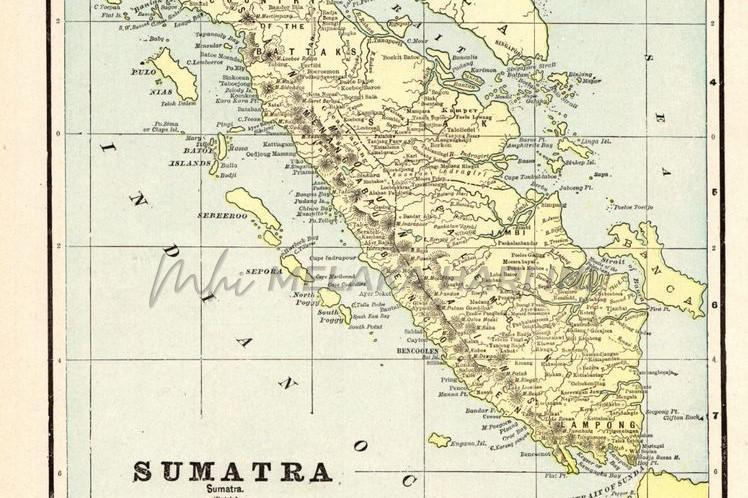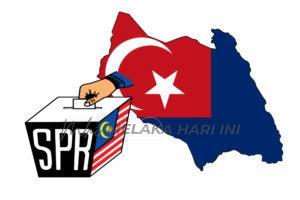
Semut, Raya and Sumatera
The word Samudra is not the origin for the name Sumatra, the second largest (after Borneo) of the Greater Sunda Islands in the Malay Archipelago. Samudra was not known to the early Arabs, even though the region was known to them as far back as the Umayyad period and during the early Abbasids.
Early Arabs and Persians knew about Zabaj, which to them included both the Javanese kingdom and empire, as well as the Sumatran empire (Sribuza). Sribuza was known to the Chinese in their earlier texts (before 900) as Shih-li-fo-shih and later as San-fo-ch’i (Sriwijaya). Arab sailors were nevertheless familiar with the name ‘Samudra’ – later used to be inclusive of the whole island of Sumatra. They frequented Fanṣūr (Barus) and Ramni (Lamri) and especially Samara in the northeast of Sumatra.
Samudra in Bahasa Melayu means ‘sea’ or ‘ocean.’ Derived from Sanskrit, its significance and historical relevance to Sumatra, had nothing to do with the ‘sea’ or ocean.’ Sumatra has its origins from two Bahasa Melayu words: semut and raya, which means ‘great ant.’ Syed Muhammad Naquib al-Attas draws his interpretation from Hikayat Raja Pasai (Hikayat), one of the earliest indigenous sources, believed to be a work of the fourteenth century, and a few earlier sources.
In his book titled Historical Fact and Fiction (2011), al-Attas tells us that the story of the ‘great ant’ came from Merah Silau, a central figure of historical consciousness in the Hikayat. It was narrated that he encountered an ant as large as a cat. This episode was what made him decide to call the place where he would establish his dominion as Semutra, from Semutra (ya). References to Samura, spelt as Samaṭar, Samuṭra, Shumuṭra or Sumuṭra are found in the writings of early geographers, navigators travellers in the 13th, 14th and 15th centuries. From these, we learned that the name Samudra was spelled with the letter ‘t’ (ṭā’), and never with the letter ‘d’ (dāl).
The name Sumatra created quite a considerable amount of educated conjectures among European scholars and historians of the Malay Archipelago since William Marsden wrote his History of Sumatra in 1783. At that time the name Sumatra was already known and applied to name the whole island.
Professor al-Attas, founder and first director of the International Institute of Islamic Thought and Civilization, International Islamic University Malaysia in 1987 was highlighting some problems in the historiography and history of Islam in the Malay Archipelago. In this instance, he was refuting the many versions of the name, and how it has been erroneously believed to be from the Sanskrit Samudra or Suwarna. N. J. Krom, a Dutch scholar in 1941 wrote on the name Sumatra in which Arabic, Chinese, Portuguese, French, Dutch and English, as well as Sanskrit and Latin versions of the possible origin were discussed.
The European scholars and historians mainly conducted their study in their various languages using the roman script; hence different spellings and confusions to the name emerged. Since the name is of an island, many have assumed as to its connection to the sea or ocean, or with much gold to be found there, hence Suwarna. One finds the second meaning from al-Biruni’s book on India, The Indica (circa 1030).
Al-Biruni said that the Hindus called the islands of Sumatra and Java Suwarnadib, i.e. Suvarnadvipa; the Gold islands. It was said that there, much gold can be panned out from the earth. The Ptolemaic ‘Golden Chersonese’ is also thought to refer to the island of Sumatra (and the Malay Peninsular). Sumatra as an island where much gold is to be found was mentioned by early Arab authors who would have derived their knowledge from the Eqyptian geographer (2nd century) and through al-Khawarizmi in the 9th century.
Al-Attas states that the name Sumatra for the whole island has been applied by historians since between 1300 and 1400. Arabic manuscripts of the 9th century onwards referring to the island were only consulted after the rise of Arabic studies in Europe, and then only quite recently by scholars and historians of the Malay Archipelago in the late 19th and early 20th centuries. Earlier in the 9th and 10th centuries, the names Ramni and Sribuza (Sriwijaya) respectively referred to parts of the island. With the gradual spread of Islam from the north of the island, and the establishment of the first Islamic kingdom of Pasai probably in the 9th and 10th centuries, the Malay name Semutra emerged to indicate that region.
When the Malays gradually became Muslims, they took the name Sumatra for the island “generally deriving it from Semutra to memorialize the story of the founding of Pasai as the original Muslim kingdom where Islam took root to finally encompass the island” (al-Attas, 8-9). The Arabs, who did not have the Bahasa Melayu vowel ‘e’ in their vocal system, could have vocalized the ‘se’ of Semutra as either ‘sa’ or ‘su’, thus reading it not only as Samuṭra or Sumuṭra, but Sumatra.
There was also Samandara in Ming Chinese records corresponding to 1403, which the Chinese pronounced as Su-men-ta-la. And the empirical basis for the episode of the large ant? Al-Attas relied on a report compiled at the end of the 10th century from earlier sources. Here we find one Muḥammad ibn Bābishād reporting that in the northern parts of Sumatra, there were “extremely large ants, particularly in the island of Lamri where they are enormous” (p.12).
#####
Next week:
Bukit Melaka
Langgani saluran Telegram kami untuk dapatkan berita-berita yang terkini.


